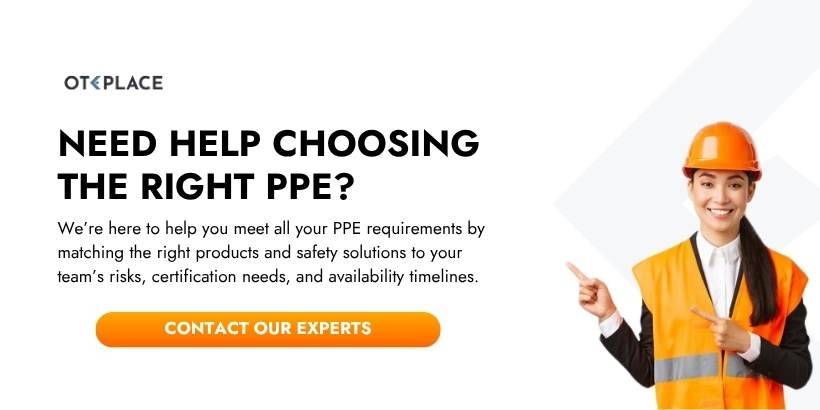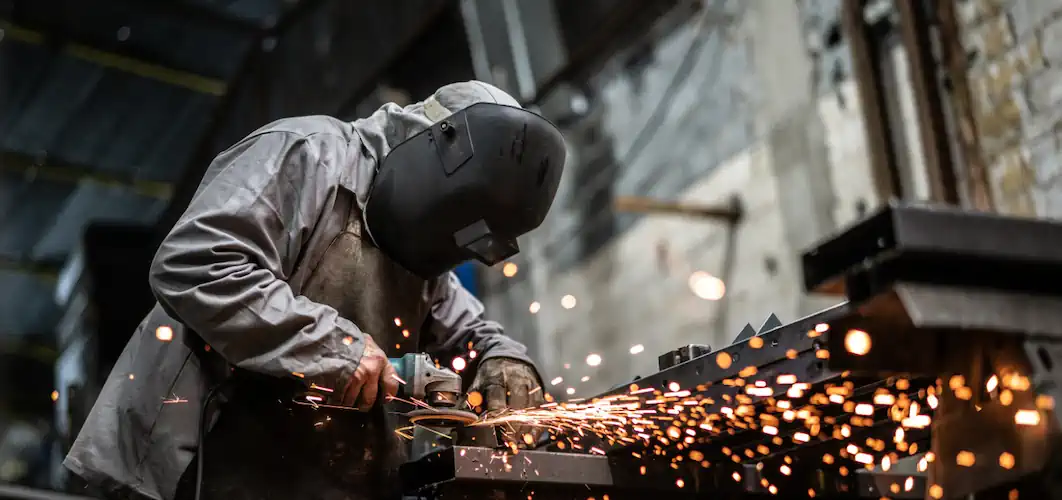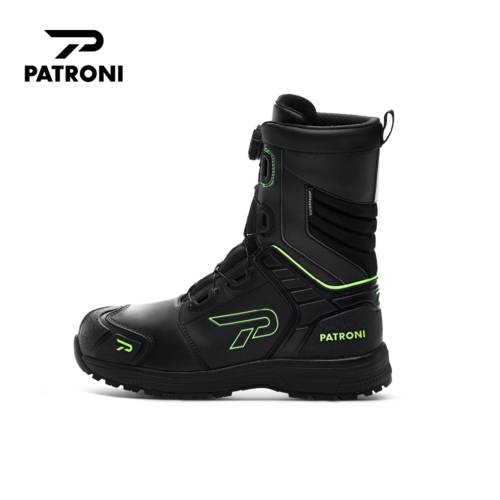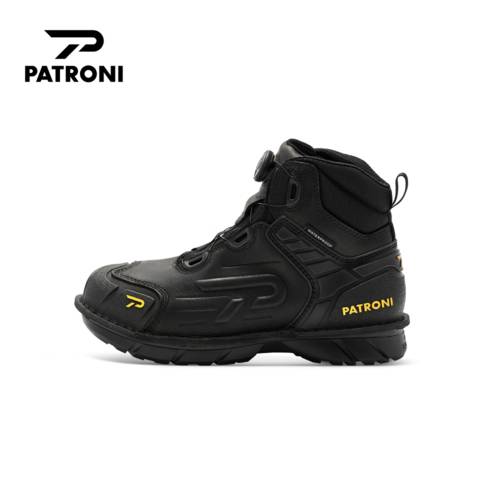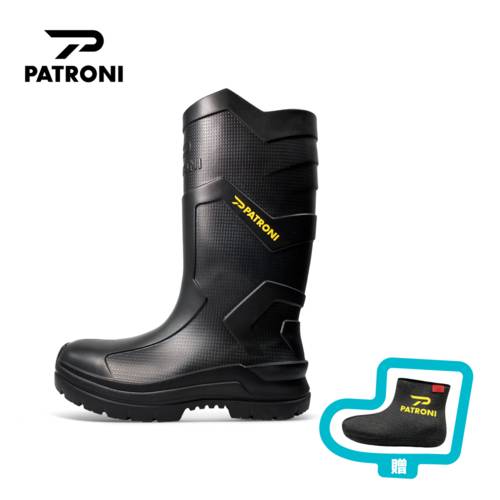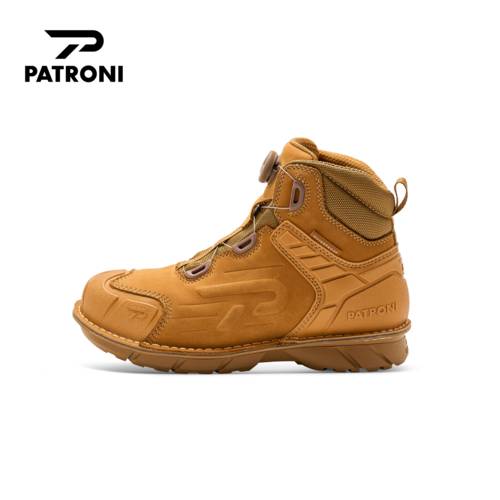7 Essential Construction PPE: A Contractors Checklist for Workplace Safety
Construction sites are dynamic environments where safety is not just a priority but a necessity. Every day, workers confront numerous hazards, from towering structures to heavy machinery. That's why having the right protective gear isn't just a recommendation – it's a lifeline.
In this blog, we will discuss the essential tools and equipment vital for safeguarding workers on the job. From the iconic hard hats to unsung heroes like high-visibility vests, we'll not only discuss what they are but also why they're indispensable.

Table of Contents
1. Hard Hats and Head Protection
-
2. Safety Glasses and Eye Protection
-
3. Ear Protection and Noise Reduction
-
4. Hand Protection and Gloves
-
5. Respiratory Protection and Masks
-
6. High Visibility Clothing and Reflective Gear
-
7. Safety Shoes and Foot Protection
Why is PPE Needed on a Construction Site?
Construction sites are notorious for their potential hazards. The nature of the work involved, such as heavy machinery, working at heights, and exposure to various materials, poses significant risks to workers. Without proper safety precautions in place, accidents and injuries are more likely to occur.
Research indicates that construction workers who neglect wearing their PPE are 3 times more likely to suffer injuries than those who use it diligently. In 2020 alone, construction accidents accounted for around 21% of all workplace fatalities, despite comprising only 4.1% of the overall workplace. This disparity underscores the critical importance of PPE in safeguarding workers’ lives.
While wearing a hard hat, gloves, and safety boots might seem like a hassle, they could save the lives of workers. Moreover, adherences to rules and regulations keep site safety under control, ensuring a safe working environment for all.
7 Must Have Personal Protective Equipment for Construction Workers
Construction sites are inherently busy and potentially hazardous environments. From falling debris to loud machinery and hazardous materials, workers face a multitude of risks. Fortunately, construction safety equipment or Personal Protective Equipment (PPE) plays a critical role in safeguarding their well-being.
1. Hard Hats and Head Protection
Head injuries are a significant concern on construction sites, where falling objects or accidental bumps can lead to serious harm.
Even if you’re only visiting a construction site, it’s ESSENTIAL to wear a hard hat.
A - Hard Hats
Hard hats, also known as safety helmets, are designed to protect the head from impact and penetration. They consist of a rigid outer shell made of high-density polyethylene (HDPE) and a suspension system inside to absorb and distribute the force of an impact.
B - Bump Caps
While hard hats are needed in a construction site due to their rigid outer shell, there are times where bump caps are requested. These caps, made from a lightweight material, offer minor protection against scrapes and bumps.
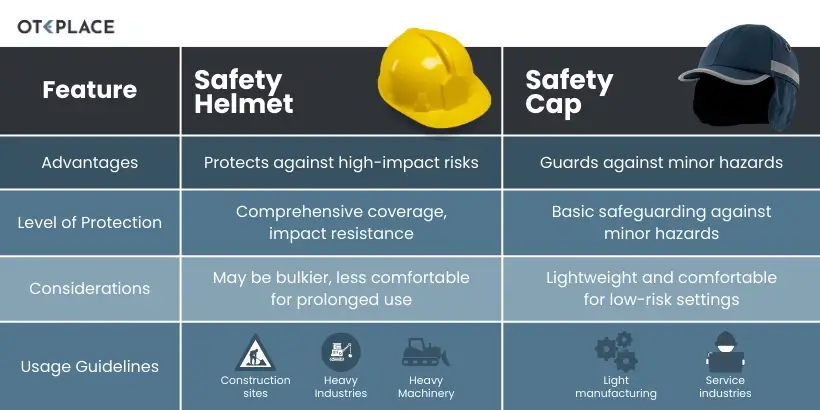
2. Safety Glasses and Eye Protection
The eyes are highly vulnerable to numerous hazards on construction sites, including flying debris, dust, chemicals, and intense light. Therefore, proper eye protection prevents eye injuries and maintains clear vision.
Safety glasses provide eye protection and avoid foreign particles from entering the eyes. Typically equipped with shatterproof lenses made from polycarbonate, safety glasses offer protection and visual clarity in hazardous environments.
The selection of eye protection gear depends on the specific hazards encountered at the construction site. Different types of eye gear are available to address varying risks.

3. Ear Protection and Noise Reduction
The high noise levels in construction sites can lead to long-term hearing damage and other related health issues. Therefore, prioritizing ear protection is vital for workers regularly exposed to loud noises.
Two primary types of hearing protection are commonly used in construction sites: earplugs and earmuffs. Earplugs are small inserts that fit into the ear canal, effectively reducing noise levels. They are typically made of foam or silicone, which conforms to the shape of the ear, providing a snug fit and blocking out excessive noise.
Earmuffs, on the other hand, are ear coverings that enclose the entire ear. Consisting of sound-attenuating cups and a headband, earmuffs offer superior noise reduction levels compared to earplugs, making them suitable for extremely loud environments.

4. Hand Protection and Gloves
As construction workers actively use their hands, they are exposed to hazards like possible cuts, burns, and punctures. The majority of workers who experience hand injuries don’t wear gloves or wear ill-suited hand gloves.
Learn more about selecting the correct safety gloves for construction workers.
5. Respiratory Protection and Masks
Construction sites often expose workers to hazardous materials such as dust, fumes, and other harmful particles. Breathing in these substances over a prolonged period can have severe health consequences. Therefore, respiratory protection safeguards workers' respiratory systems.
Respiratory protection can range from simple disposable masks to more advanced respirators, depending on the level of protection required. Disposable masks, such as N95 masks, are commonly used on construction sites to filter out particles and prevent inhalation.
6. High Visibility Clothing and Reflective Gear
Construction sites are dynamic environments, with various workers, vehicles, and equipment constantly in motion. Therefore, workers must be easily visible to others to prevent accidents and collisions.
High visibility clothing, often called hi-vis clothing or reflective gear, is designed to make workers stand out in low-light conditions or areas with poor visibility. These garments typically incorporate fluorescent colors, such as orange or yellow, and reflective strips that reflect light back to its source.

7. Safety Shoes and Foot Protection
Ever found yourself slipping or feeling the impact a bit too much? It might be time to reevaluate your work boots!
Opt for protective footwear such as steel-toed boots or shoes with slip-resistant soles. These types of footwear are designed to provide protection against falling objects, heavy equipment, and potential punctures from sharp objects on the site.
Safety equipment for feet may also include metatarsal guards, which offer extra protection to the top of the foot. In high-risk construction zones, these guards provide invaluable protection against falling objects and heavy equipment.
OSHA Regulations for Construction Site Safety Equipment
OSHA, or the Occupational Safety and Health Administration, sets regulations and standards to ensure the safety and health of workers in various industries, including construction. One of the primary construction safety equipment laid down by OSHA is using personal protective equipment (PPE). PPE includes hard hats, safety glasses, gloves, and high-visibility clothing.
Fall protection is another critical aspect of construction site safety. OSHA requires employers to provide protection systems against common fall hazards when workers operate at heights of six feet or more. Fall protection systems can include guardrails, safety nets, or personal fall arrest systems.
Electrical hazards are prevalent on construction sites due to power tools and electrical wiring. OSHA regulations require employers to provide workers with electrical protective equipment, such as insulated gloves and rubber-insulating blankets when working on or near exposed energized parts. These protective measures help prevent electrical shocks and burns.
Adequate training in electrical safety procedures is also crucial for workers dealing with such hazards.
Common Safety Hazards in Construction Sites
Understanding the common building hazards workers face helps to identify specific safety equipment needed on construction sites. By identifying these risks, employers can better prepare and select the appropriate safety equipment to mitigate them.
1. Falls
Working at heights is a common aspect of construction, making falls a significant hazard. Whether it's a ladder, scaffolding, or a roof, falls can result in severe injuries or even fatalities.
2. Struck-by Objects
Construction sites are often bustling with activity, with various equipment, tools, and materials in motion. Workers can be struck by falling objects or moving machinery, leading to serious injuries.
3. Electrical Hazards
Construction sites involve significant electrical work that exposes workers to the risk of electric shocks or burns, if not properly managed.
4. Respiratory Hazards
Dust, fumes, and other airborne particles are prevalent on construction sites, posing risks to workers' respiratory health if inhaled over an extended period.
5. Noise Exposure
Construction sites are noisy environments, with loud machinery and tools operated simultaneously. Prolonged exposure to high noise levels can lead to hearing loss and other hearing-related issues.
6. Caught in Between Objects
Workers may become caught in or between machinery, equipment, or materials, leading to crushing injuries or suffocation. Trench collapses, caught-in accidents involving machinery, and equipment malfunction are common scenarios.
7. Heat Stress and Cold Stress
Working outdoors exposes construction workers to extreme temperatures, leading to heat or cold stress. Inadequate hydration, lack of shade, and strenuous physical activity can result in heat-related illnesses such as heat exhaustion or heat stroke. On the other hand, prolonged exposure to cold temperatures can cause hypothermia and frostbite.
8. Manual Handling and Overexertion
Lifting, carrying, and moving heavy objects manually can strain muscles and lead to musculoskeletal injuries such as strains, sprains, and back injuries. Overexertion from repetitive tasks or awkward positions can also contribute to ergonomic injuries.
By being aware of these hazards, you can implement the necessary safety measures, including providing appropriate safety equipment, to protect workers from potential harm.
